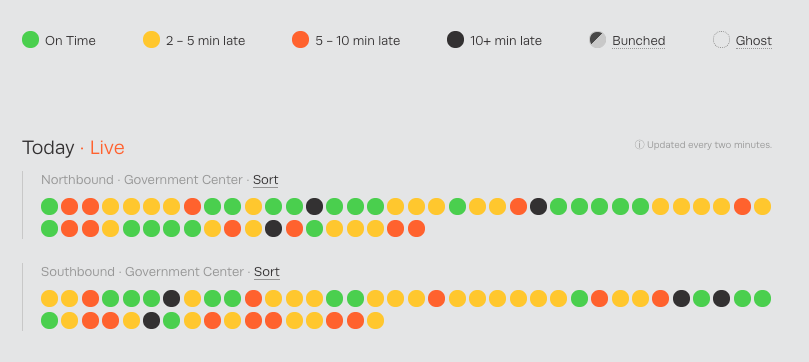In all my years of working on transit in North America, I’ve heard lots of mayors make announcements about rail projects and various new technologies. I’ve heard many make vague supportive statements about bus service. I’ve even heard them advocate for more bus service. But I’ve never a big city mayor promise to dramatically speed up buses all over a city. (Correct me if you have.)
Vin Barone at AMNY reports that New York Mayor Bill de Blasio will announce a commitment to increasing bus speeds across his city by 25%.
This is a very high number! Admittedly, it’s a low base, with so many New York city bus routes running so slowly that it’s sometimes faster to walk. Most individual interventions I’ve encountered improve speed by much less than 10%. So hitting 25% will require a huge range of actions.
These actions can be sorted into two baskets: Cost and Controversy.
Some problems can be solved with money, without too much controversy. All of the following are planned, either by the City or by the transit agency (MTA).
- Improving signal priority systems, which is a matter of signal technology. (City)
- Improving enforcement of bus lanes. (City)
- Improving active supervision to reduce bunching, via a “Bus Command Center” (MTA)
- All-door boarding via fare-card readers at rear doors, and roving fare enforcement (MTA)
All that is mostly money, both capital and operating. Lots of it. And all together, it is unlikely to get you to 25% citywide.
The other big step involves controversy rather than money. More bus lanes need to be created, and the space for them will come from some other street use, usually parking lanes, traffic lanes, and versatile curb space for pickups and deliveries. Bus facilities cost money too, but winning these battles is the bigger struggle, so the cost is really in political capital rather than money. All of these impacts are profoundly controversial in a dense city, which is why cities tend to do them only after they’ve exhausted all the other options, and why so many bus lane plans are watered down, and made less functional, through the public outreach process.
The mayor’s target will work if it becomes a consistent direction to city government, fully explained to the people, so that not achieving it is not an option. When we work on this process, we do a lot of work in explaining why the target is what it is, and building some consensus around it, so that staff will have political support to not compromise as the inevitable objections roll in. The mayoral declaration is a huge step. It remains to be seen if the target holds in the face of the controversy.
Because ultimately, while money is an obstacle, controversy is a much, much bigger one, and is the main reason big-city bus service usually doesn’t improve.
